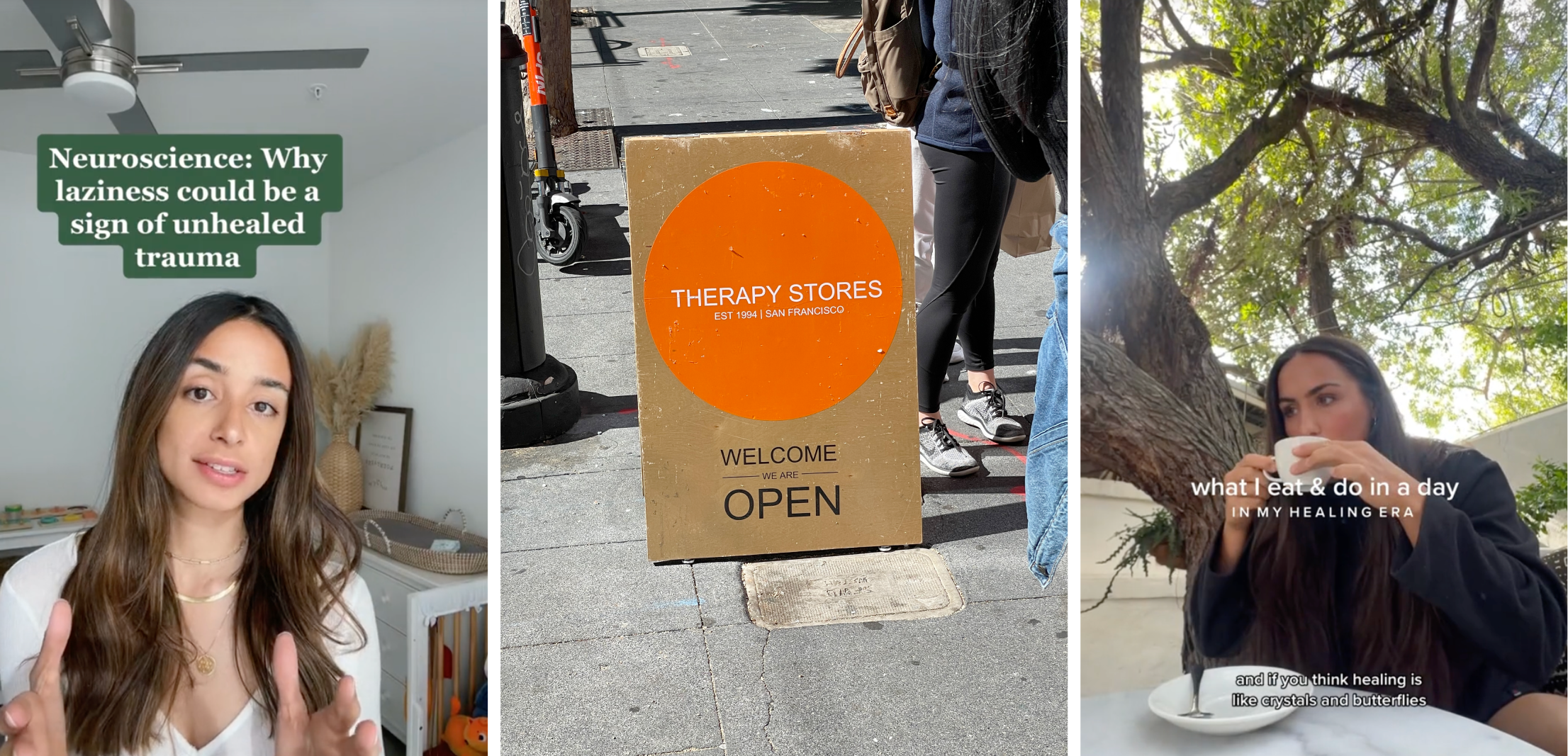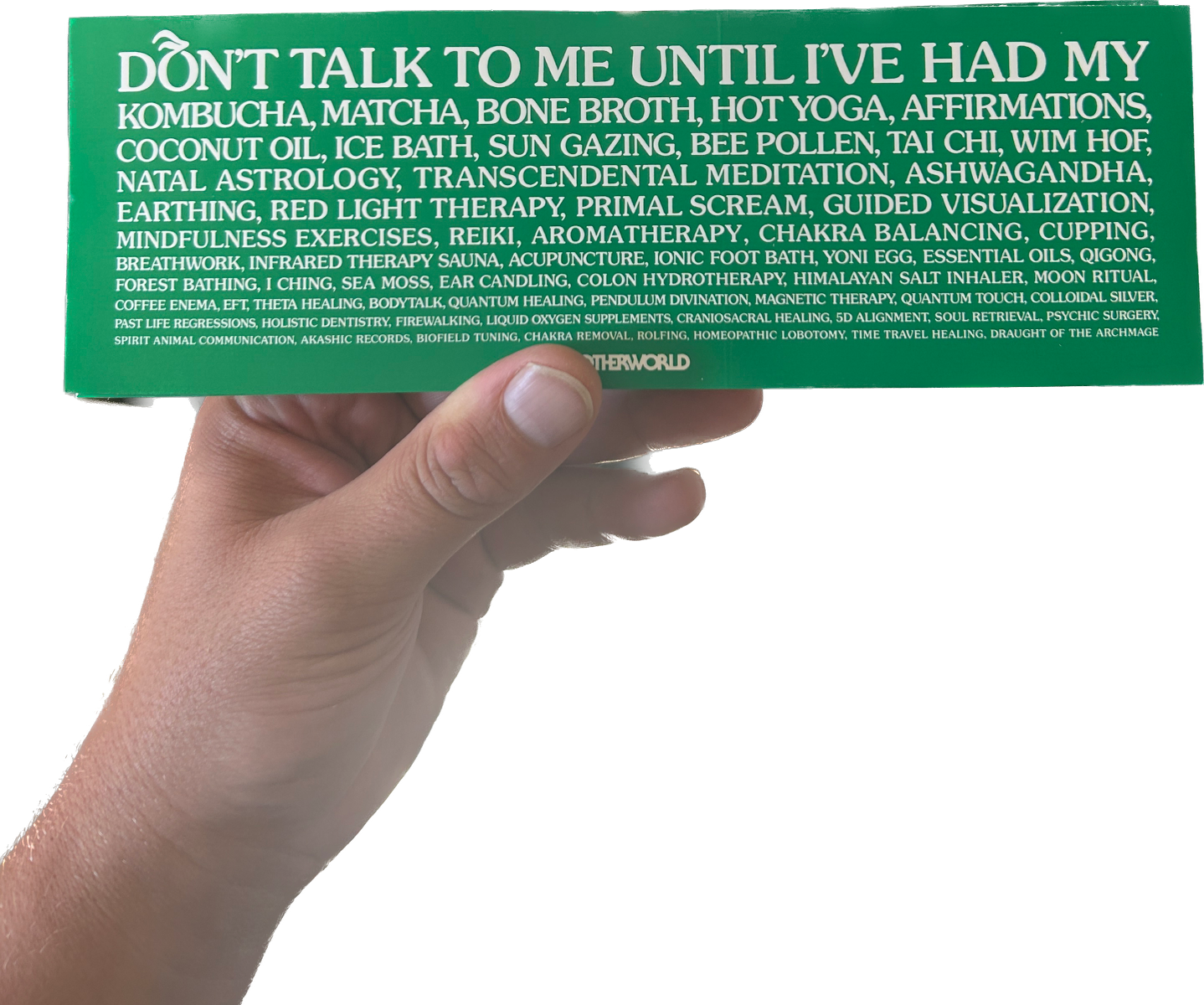The terrain of American mental health is as vast and colorful as this country’s geography. I’ve been interested in exploring the landscape since 2019, when I dashed off a quick blog post on cultural differences in psychology. Backburnered for four years, the topic is now top of mind for me. My interest in the economies of cultural and spiritual production, the topic of Life After Lifestyle, led me right back to mental health and wellness. But there are many other cues that point me this direction. Something weird is clearly happening with American psychology.

One major factor is the expansion of diagnostic criteria for PTSD in the DSM-IV and DSM-V, which have helped make trauma into a singularly dominant cultural complex. While other disorder categories have undergone similar expansions, obsessive-compulsive disorders and anxiety disorders among them, trauma is unavoidable: it can be personal, generational, and cultural. My eyebrows always raise when I see a cultural concept get consolidated, reified, and applied to many categories. Such homogenization is often the precursor to a paradigm-breaking concept.
Where might such a paradigm shift come from? Set against the trauma-informed backdrop is a slow-motion explosion of psychiatric treatments and practices of all kinds. These range from psychodynamic “transformative modalities” like IFS or psychodrama, to the dozens of so-called “evidence-based” behavioral therapies on offer, to TikTok superstitions like use of ice presses for trauma alleviation. Then there are the vast range of body-oriented “scientific” processes like EMDR and tapping, and somatic strains of psychodynamic therapies. Of course, secularized meditation and yoga practices are also being leveraged as healing techniques, along with even more left-of-field practices like Rolfing, reiki, and holotropic breathwork. Finally, psychedelic therapy seems to be an unstoppable juggernaut, soon to be integrated into our healthcare system.
What to make of this? On the one hand, the DSM enshrines legal, insured, prescribed notions of mental illness and health. On the other, the sheer diversity of treatments and practices make it impossible to paint a unified picture of today’s mental health landscape. While many of these practices embrace trauma theory as their focus, others have distinct views of energy, the nervous system, and suffering. What’s most striking is that to some degree, they all seem to work. What accounts for their success or lack thereof?
These are big questions, and I’m starting to think this is what I’d like to spend the next bit of my career on. Let me try to articulate an interesting idea I’ve been developing about mental health and wellness in America.
I got turned on to this topic again when I read Gilbert Seldes’ book The Stammering Century. Seldes covers American cults and movements of the 19th century, from Christian camp meetings to the Mesmerist mania to various “electrical” quack cures. Health isn’t the theme of the book; in the 19th century, movements are nearly always framed in moral terms. Many of them started out as explicitly Christian movements, but evolved over the century by introducing stranger and more secular ideas: a Christian fruitarian diet, a Christian free love commune, a Christian prohibition movement. With the introduction of European “mind cure” manias like Mesmerism and phrenology, theological framings became less relevant. By the start of the 20th century, Christian Science and New Thought, two precursors to today’s “manifestation” theories, had grown in popularity.
Today’s diet obsessions and folk healing concepts have a century and a half of science to their advantage, but the wackiest of them are no less wacky than the Stammering Century’s weirdest lifestyles. I think it’s fair to say that today we have an even wider and weirder range of cures and movements. What I believe accounts for divergence in health concepts both then and now is confusion on the deepest levels of cultural reality. It’s easy to see by looking at the 19th century first.
Metaphysically and morally, the 19th century was a tumultuous period: theism faltered as it contested with an unfolding secularity and the growing power of Romanticism. Early commercial industrialism and increasing urbanism created large populations of impoverished and disenfranchised wage laborers. New discoveries in science, such as electricity, germ theory, and the unconscious, created a new repertoire of mental models for members of educated society. This upheaval, I think, is the context that required new theories of “wellness” to be worked out in practice. Seldes shows vividly how the era’s communes and manias had to work quite hard to make sense of these different concepts and moral sources. Phrenology, for instance, was more than just the reading of character traits from funny head shapes; it was a whole physiological theory of human characteristics and a way of approaching moral problems. Seldes says that according to phrenology “there should be no punishment for children; instead the organ counteracting the one responsible for misdeeds was to be exercised and developed.” Here we see not only phrenology undermining the Christian notion of sin and damnation, but also a behaviorist lineage which culminates in our time with cognitive behavioral therapy.
In other words, I read these developments as a process of creative evolution: society’s attempt to find a notion of illness and health that “fit” emerging models of self and society. The framework that eventually did find fit, of course, was psychoanalysis. Freud was a medical doctor and considered psychoanalysis a science. His insights on the role of past events in unconscious adult behavior, for instance, were revolutionary. But in other ways, he is very much the successor of other 19th century health movements. In my reading, Freud not only made true discoveries about the human mind; with his framework of the id, ego, and super-ego, he also synthesized moral ideas of his era into a unified cultural model of pathology and mental health. While his influence is now downplayed in university psychology departments, today we can barely think without using Freudian terms. Trauma, repression, and neuroses are part of our mental furniture.
This sets the stage for what’s happening in mental health today. While the basic techniques of psychoanalysis held prestige among clinicians until the end of WWII, from the 50s onward a splintering began, leading to transactional, gestalt, and client-centered therapies, and of course the resuscitation of the behavioral therapy lineage. Fast forward to today, and there is a striking resemblance between the pre-Freudian landscape and our current moment. I believe we could be in the midst of a divergent era, much like the one Seldes documented. What are the underlying features of today’s healing arts? What cultural concepts are they drawing on? The influence of Asian religious practices on the West during the 20th century, which traveled through influential networks like the Esalen Institute, cannot be understated here.

Moreover, how do social networked technologies change these cultural concepts? I diagnosed the causes of confusion over 19th century health concepts as a response to the emergence of new types of selves (industrial, urban, secular). It barely needs saying that we’ve lived through an equally momentous transition with the development of the internet. One fascinating recent paper characterizes TikTok Tourette’s syndrome as a mass sociogenic illness. Is this framing correct, or are we seeing experiments in different types of selves? New understandings of what is human will give us new understandings of what is pathological—and what is healthy. In a number of places, I’ve articulated my sense of a tentative yet growing collectivist cultural mythology, one that is deeply linked to use of technology. Could this mythology, perhaps drawing from Jung more than Freud, be tapped into for therapeutic purposes?
If my suspicions are right, all this spiritual entrepreneurship I’ve been documenting is playing the role of competitive evolution towards a new synthesis, a new way of making sense of mental health in the West. We may be surprised at what happens in the coming decades; we may end up with concepts of wellness and illness that do not exist today.
There are a million sorts more trails to go down here, but there’s my rough sketch of the territory as I see it. In order to get at these big questions I’m interested, I’m having to break them down into smaller ones.
- How did different psychoanalytic concepts spread through popular culture and gain adoption?
- What kind of cultural assumptions does the trauma concept require to function?
- Is it possible to measure the biophysical and cultural operants of a treatment separately?
- What role does the patient’s will to get better play in their psychological health? What is a placebo?
- What is happening in the body during talk therapy?
- What role does the body play in mediating cultural notions of health illness and health—with or without the help of language?
- What ideas and assumptions do AI therapy chatbots introduce into the therapeutic relationship?
Ok, so most of these questions aren’t small after all. I’ll need all the help I can get answering them! I’ve been reading up on medical anthropology literature and the history of psychology to understand the origin point of American mental health concepts. I also want to read Freud’s major works before the end of the year, hopefully with help from my buddy @qorprate. Lastly, I’ve also been digging back into the earlier work of my favorite philosopher, Charles Taylor. His collected Philosophical Papers are a brutal critique of behaviorist and biomedical models of psychology. I’m partial to his views, but I’m trying to remain as open as possible and allowing myself to approach the most basic concepts with a fresh view.
I’m also learning a lot from others as I think more about these topics. I’ve been really enjoying my conversations with:
- Justin Mares, about diet’s role in mental health and psychotherapy’s implicit cultural agenda
- Olivia Norrmén-Smith, about medical anthropology
- Rae Dinh, about psychedelics and integration work
- Brian Schopfel, about social spaces that embody wellness concepts
- Nathan Rice, about the overabundance of psychological theories
- Jeffrey Kripal, Lawrence Wilkinson, Hong and Bora Kim, Sina Habibian, @userpreferences, Ellie Hain and Joe Edelman, Ankur Sharma, and others.
These have been horizon-expanding conversations. If you have ideas in this territory to share, I would look forward to having a conversation with you. I’m interested in all dimensions of this thought space! For instance, companies bringing psychedelics to market or experimenting with AI-driven CBT could be great contexts for interesting research. I’d also like to meet practicing clinical psychiatrists, researchers, and healers who are experimenting with new treatments for the types of problems patients are bringing them. And it would be great to speak with academic researchers in critical psychiatry or medical anthropology.
If that’s you, reach out. In the meantime, I’ll keep blogging on this topic as I figure things out.
